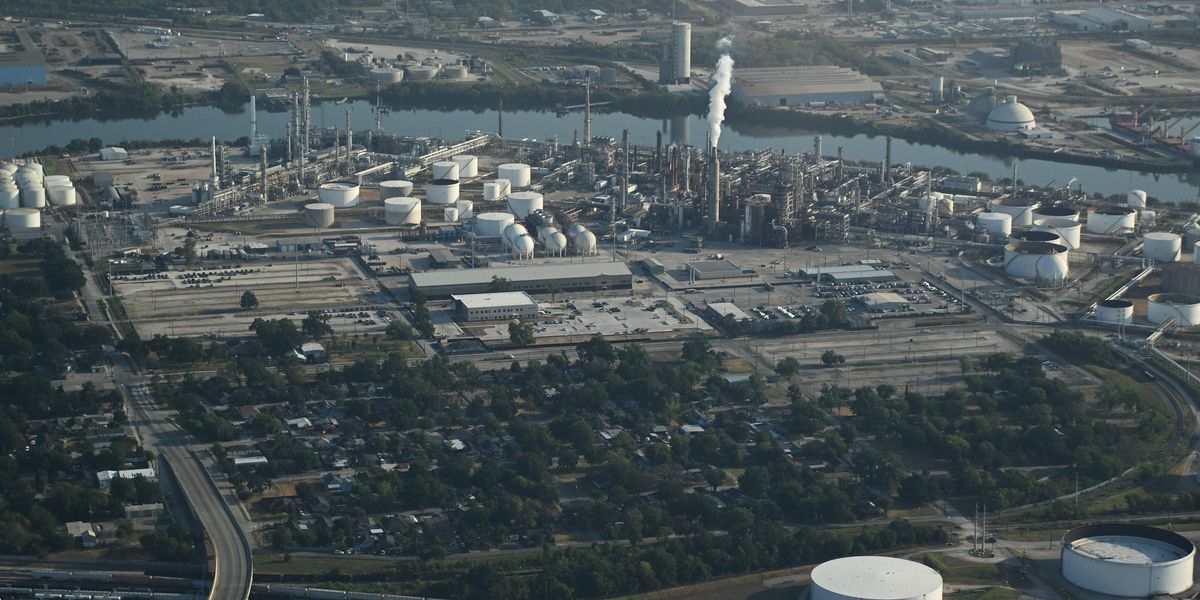
HOUSTON — The Texas department responsible for monitoring air pollution is using different science to analyze risks than the federal government recommends. Health advocates say this leaves people breathing more cancer-causing compounds.
The Texas Commission on Environmental Quality, or TCEQ, provides air permit applicants with the option to use an alternative algorithm to simulate air emissions, despite the U.S. Environmental Protection Agency’s preference for the use of an updated algorithm, which has more advanced meteorological data and is more reliable in complex landscapes, better-predicting air pollution dispersion paths, altering exposure levels and locations, a 2008 study found.
A TCEQ spokesperson told Environmental Health News (EHN) that the agency uses the older algorithm for “minor source permitting projects,” but uses the newer EPA-preferred model for any permitting project that would trigger federal review.
The latest example of the older modeling being used came in April of 2023, regarding air pollution permitting for concrete batch plants.
While offering this model in permitting some projects, the TCEQ plans to set a target risk level for cancer at 1 in 100,000 — a proposal currently open for public comment. According to the TCEQ, this risk level has been used informally since 1999, but a 2023 vote from all its commissioners would create a standard. Health advocates worry this could result in more cancer cases in Texas due to the older algorithm potentially misrepresenting actual risk.
In Texas, that risk comes from different fronts, but especially from the petrochemical industry. Its footprint there is the largest in not only the United States, but the world. The oil industry is vast and contributes large emissions of carcinogens like benzene, ethylene-oxide, formaldehyde, and butadiene. In fact, Texas recently received funding from the EPA to increase its air monitoring.
“Zero is the only safe level of human exposure”
Understanding cancer risk is difficult. Federal and state environmental organizations analyze cancer risk levels with a target risk level, or TRL. The TRL estimates how many additional cases of cancer will occur in a population due to long-term exposure to certain pollution(about 70 years) in addition to the original cancer risk for that area. The EPA’s acceptable target risk level is presented as a spectrum —the highest acceptable risk is 1 in 10,000 and the lowest risk is 1 in 1,000,000. This range was created after the EPA studied benzene in 1989, almost 40 years ago. If the TCEQ adopts the current proposal it will not need to evaluate risk level below 1 in 100,000, despite the EPA noting there is still a risk worth considering at 1 in 1,000,000.
Neil Carman, a previous TCEQ air investigator and current clean air program director of the Sierra Club, spoke to EHN about the target risk level. Carman said, “zero is the only safe level of human exposure, any level above [that] and you’re playing a risk game.”
Carman said that the algorithms that calculate air emissions often do not account for “worst case scenarios” like chemical fires, flaring or leaks and that algorithmic simulations can be played over and over to produce favorable outcomes. The TCEQ reviews all simulations before issuing permits, but these simulations are all based in algorithmic theory. In science, a degree of uncertainty is accepted, but Dr. Inyang Uwak, Environmental Epidemiologist at Air Alliance Houston, told EHN this uncertainty increases when the “best science available is not being used.”
“They look at the risk of each individual chemical, without analyzing the cumulative impact of all chemicals from the facility, thereby potentially underestimating exposure of communities close to the plant,” Uwak said.
A TCEQ spokesperson told EHN that using the target risk level of 1 extra case of cancer per 100,000 people “allows for potential cumulative exposure to multiple carcinogens while remaining below the upper end of EPA’s acceptable risk range [of 1 in 10,000].” Cumulative exposure varies across the state. Areas near the Gulf Coast at the center of the petrochemical industry undeniably have higher levels of cumulative exposure. This risk level would be universal across Texas and in its current state would not vary despite varying densities of industry. At the time of publication, the TCEQ did not comment on its choice to continue using the alternative algorithm.
As of now the period for public comments will end October 3, 2023, and can be made here. No formal public hearings have been scheduled for this proposal at this time.
Editor’s note: This story was updated to include statements from the TCEQ.
